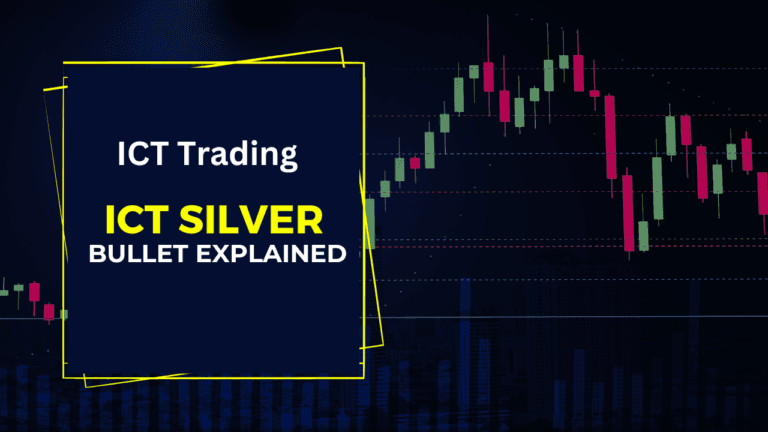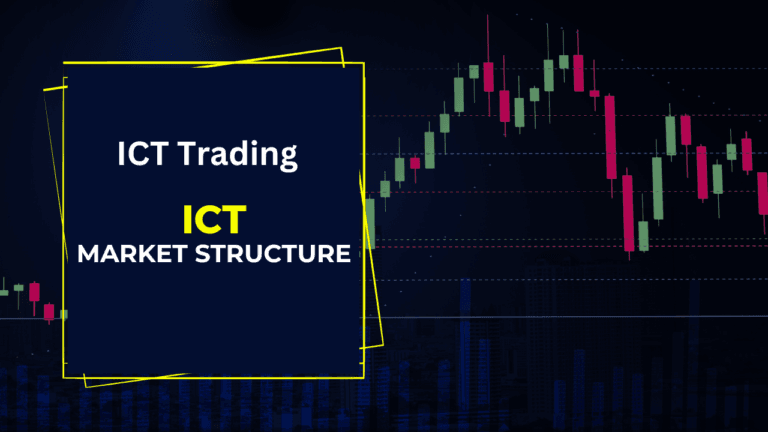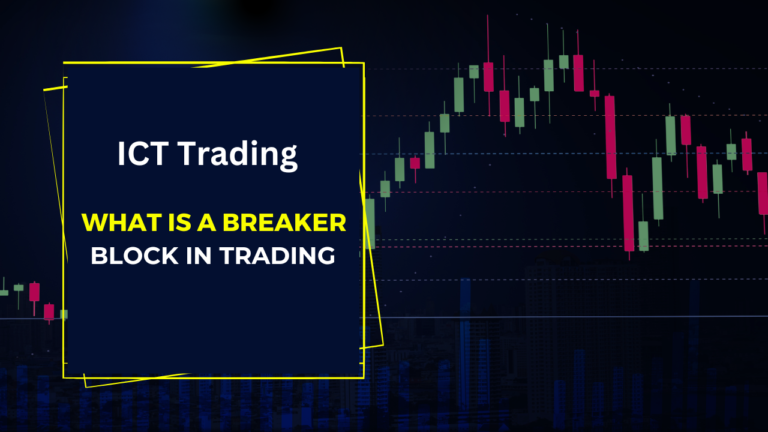Bearish Break of Structure – A Quick Guide

Understanding key market shifts is crucial for successful trading, especially in Forex and other financial markets. One of the most vital concepts in Inner Circle Trading (ICT) is the Bearish Break of Structure (BOS). This article delves into the details of the bearish BOS, explaining how traders can use it to anticipate market downturns and make informed trading decisions. Whether you’re a beginner or a seasoned trader, mastering this concept is essential for navigating market dynamics.
Introduction to Bearish Break of Structure
The Bearish Break of Structure is a powerful concept in technical analysis, especially in ICT. It refers to a situation where the market breaks below a key structural low, indicating a potential shift from bullish to bearish trends. For traders following ICT strategies, this break of structure can signal an opportunity to sell, helping to position their trades for potential profit during market declines.
What is a Bearish Break of Structure?
In trading, the market structure is created by a series of highs and lows that form the current trend. A Bearish Break of Structure happens when the price moves below the previous higher low, signaling the weakening of bullish momentum. This break often suggests a potential shift to a downtrend. In ICT, the break of structure is a critical signal, allowing traders to recognize early trend reversals or continuations in the market.
The bearish break is crucial because it allows traders to preemptively react to a market downturn, reducing their exposure to losing trades. Once a break of structure happens, traders often look for confirmation signals, such as price rejection from the newly formed resistance, to enter the market at an ideal point.
Importance of Bearish Break of Structure in ICT Trading
In Inner Circle Trading, the bearish break of structure is more than just a price movement—it’s a confirmation tool that reveals the underlying market sentiment. When the market breaks a key support level (a previous low), it signifies that sellers are gaining control, increasing the likelihood of further downward movement.
For ICT traders, recognizing a bearish BOS can provide excellent entry points for short trades, particularly when combined with other ICT tools like the premium-discount model. It also helps traders spot fake breakouts, ensuring they only enter trades when the structure is genuinely broken. This strategy helps protect traders from false signals and improves trading accuracy.
Understanding Market Structure in ICT
To fully understand the bearish break of structure, traders must first grasp the market structure itself. The market structure is the framework that defines price movements, helping traders see the bigger picture of trend direction, support, and resistance levels. In ICT trading, market structure is a foundation for analyzing both bullish and bearish trends.
What is Market Structure?
Market structure refers to the arrangement of swing highs and swing lows that define the trend in any given timeframe. It shows the interaction between buyers and sellers, with higher highs and higher lows indicating an uptrend, and lower highs and lower lows signifying a downtrend.
In ICT trading, understanding market structure is essential for recognizing when the market is likely to shift. The market structure allows traders to determine key turning points in the price action, such as the bearish break of structure, where a significant shift from bullish to bearish may occur.
Key Components of Market Structure in ICT
ICT market structure consists of several components:
- Swing Highs: The highest point in price before a downward move.
- Swing Lows: The lowest point in price before an upward move.
- Higher Highs and Higher Lows: These confirm a bullish structure.
- Lower Highs and Lower Lows: These confirm a bearish structure.
Recognizing these key components helps ICT traders navigate the market effectively. The bearish break of structure often occurs when the price breaks below a previous higher low, signaling a potential end of the uptrend and a transition to a bearish phase.
Traders use this information to spot potential reversals and take short positions, ensuring that they can capitalize on market shifts. Understanding how to read market structure, therefore, lays the groundwork for applying the bearish BOS and other advanced ICT strategies.
What is a Bearish Break of Structure in ICT?
The Bearish Break of Structure (BOS) is a key signal in the Inner Circle Trading (ICT) strategy, used to identify potential trend reversals in the market. A bearish break of structure happens when the price action breaks below a previous higher low within an existing uptrend. This break signals a shift in market momentum from bullish to bearish, suggesting that sellers are starting to overpower buyers.
In simple terms, when the market moves in an uptrend, it forms higher highs and higher lows. But once the price fails to create a new higher high and instead breaks below the previous higher low, it forms a bearish break of structure. This indicates a weakening of buying power and a possible shift into a downtrend.
Bearish BOS vs. Bullish BOS
In contrast to a bullish break of structure, where price breaks above a previous lower high and suggests the market is shifting into an uptrend, a bearish BOS suggests a move downward. It is important to understand both types of breaks when analyzing market structures, but in this case, the bearish break is more critical for traders looking to capitalize on downward price movement.
Identifying a Bearish Break of Structure in ICT
For ICT traders, spotting a bearish BOS involves looking at a combination of swing lows, higher lows, and their relation to market price action. Here’s how traders typically identify it:
- Step 1: The market forms a series of higher highs and higher lows in an uptrend.
- Step 2: The price starts to weaken, struggling to break above a previous high.
- Step 3: The price breaks below the last higher low, indicating a bearish BOS.
Confirmation Signals for Bearish BOS
One of the biggest risks in trading is false breaks. To avoid this, ICT traders often seek confirmation before fully entering a trade based on a bearish break of structure. Common confirmation signals include:
- Price rejection at a key resistance level after the break.
- Bearish candlestick patterns, like engulfing candles, that confirm the shift in sentiment.
- Fibonacci retracement levels aligning with the break.
How to Use the Bearish Break of Structure in Trading
Once a trader identifies a bearish break of structure, the next step is to apply this information to make informed trading decisions. In ICT trading, the bearish BOS serves as a high-probability entry signal for short trades. Here’s how traders can effectively use this concept to improve their trading strategy.
Entry and Exit Strategies Using Bearish BOS
Risk Management and Stop Loss Placement
Risk management is critical when trading a bearish break of structure. A well-placed stop loss can prevent significant losses if the trade goes against the initial prediction. ICT traders typically place stop losses above the broken higher low or the new resistance level formed after the BOS.
For example, if the price breaks below a higher low at 1.1500, traders may place a stop loss slightly above this point to account for market fluctuations. This ensures that if the market moves against their position, their risk is limited.
Combining Bearish BOS with Other ICT Tools
To maximize success, ICT traders often combine the bearish break of structure with other advanced ICT strategies such as:
- Premium-Discount Tool: After identifying a bearish BOS, traders look for trades in the premium zone (above equilibrium), as this area is considered more likely to lead to profitable short positions.
- London Kill Zone: Traders can also time their entries during the London Kill Zone, a period known for high market volatility, which enhances the chances of a significant market move following a bearish BOS.
Combining Bearish BOS with Other ICT Concepts
In Inner Circle Trading (ICT), the bearish break of structure (BOS) is not used in isolation. Successful traders often combine this concept with other ICT tools and strategies to increase the accuracy of their trades and optimize their market timing. By integrating the bearish BOS with these advanced techniques, traders can significantly enhance their ability to spot high-probability trade setups.
Using the Premium-Discount Model with Bearish BOS
One of the most powerful concepts in ICT is the premium-discount model, which helps traders determine whether the market is overbought (premium) or oversold (discount). After identifying a bearish break of structure, traders typically look for selling opportunities in the premium zone. This is the area above the equilibrium price, where the market is considered to be overbought, and a downward correction is more likely.
- Premium Zone: The price is in the premium zone when it is trading above equilibrium. This is the ideal area for selling after a bearish BOS, as traders expect the market to decline further from this point.
- Discount Zone: If the price is in the discount zone (below equilibrium), traders may avoid entering new short positions, as the market could be near a potential reversal.
Timing Trades with the London Kill Zone
The London Kill Zone refers to a high-volatility period during the London trading session, known for sharp price movements and increased market activity. ICT traders often time their entries based on the bearish BOS within this period to take advantage of the volatility.
- Increased Volatility: During the London Kill Zone, liquidity and volatility tend to spike, making it an ideal time to enter trades based on a bearish break of structure.
- Precision Entries: Traders using the London Kill Zone concept will look for the BOS in conjunction with the timing of this session. This increases the likelihood of catching a substantial move and improving the risk-reward ratio.
Incorporating the “One Shot One Kill” Setup
The One Shot One Kill strategy is an ICT concept that focuses on taking high-probability trades with a clear entry and exit strategy. A bearish break of structure is often the key signal for traders to initiate a One Shot One Kill setup. The BOS provides a clear indication of market direction, and traders can enter with confidence, knowing that the trade aligns with both market structure and ICT’s precision-based strategy.
By combining the bearish BOS with the One Shot One Kill approach, traders can reduce over-trading and focus on quality setups, increasing their chances of success.
Conclusion
The bearish break of structure (BOS) is a fundamental concept in ICT trading, allowing traders to identify potential downward market shifts and capitalize on them. Understanding how to recognize and confirm a bearish BOS is essential for improving trade accuracy and reducing the risk of entering false breakouts.
When combined with other ICT strategies, such as the premium-discount model, London Kill Zone, and One Shot One Kill, the bearish BOS becomes a powerful tool for traders looking to improve their performance. By mastering this concept and integrating it into a broader ICT framework, traders can make more informed decisions and increase their potential for success in the Forex market.
Read More ICT Trading Strategy- A Quick Guide
Frequently Asked Questions
What timeframe is best for spotting a bearish BOS?
The best timeframe for spotting a bearish break of structure depends on the type of trading you are doing. For intraday traders, lower timeframes such as the 5-minute or 15-minute charts are effective for identifying short-term breaks. For swing traders, higher timeframes like the 1-hour or 4-hour charts provide more reliable BOS signals that indicate larger trend shifts.
Can a bearish BOS be a false signal?
Yes, a bearish BOS can sometimes be a false signal, especially in markets that are highly volatile or prone to sudden price movements. To avoid falling into a false break trap, it’s important to use confirmation tools, such as waiting for a retest of the broken structure or using additional ICT tools like Fibonacci retracements and candlestick patterns to confirm the break before entering a trade.
How do you combine bearish BOS with other ICT tools?
Combining a bearish BOS with other ICT tools such as the premium-discount model, London Kill Zone, and One Shot One Kill setup can significantly improve trade accuracy. By aligning the BOS with premium price levels and timing entries during high-volatility sessions, traders can increase their chances of catching high-probability trades and reduce the risk of entering at unfavorable price levels.





